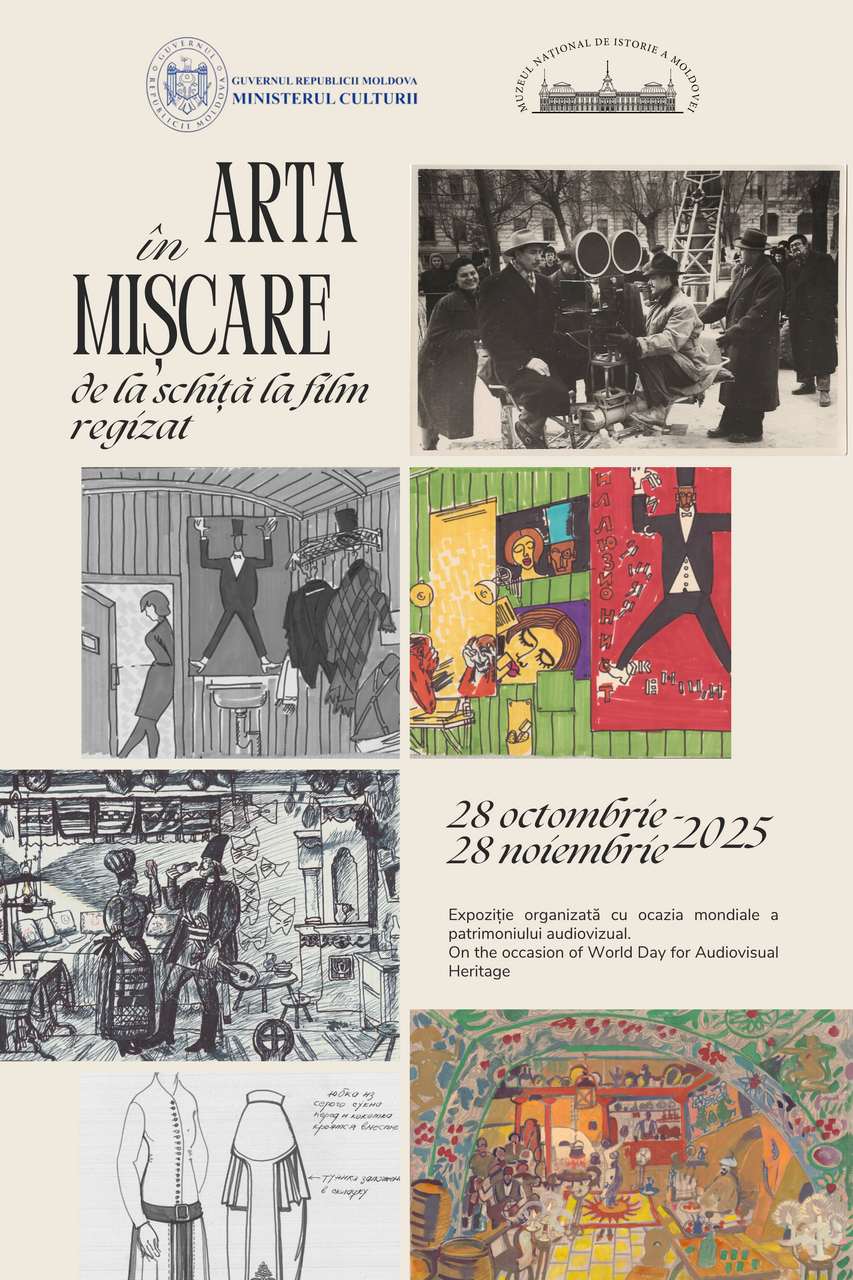
The exhibition "Art in Motion: From Sketch to Film", organized to mark the World Day for Audiovisual Heritage, aims to explore the valuable contributions of production designers who have been active since the founding of the Moldova-Film studio, such as Aurelia Roman and Stanislav Bulgakov.
Moldova-Film became an independent film studio in 1952 under the name "Moldovan Studio for Documentary Newsreels." On January 24, 1957, following its reorganization and renaming as the "Moldova-Film Studio for Newsreels and Documentaries," cinematography quickly became a cultural pillar of the Moldavian Soviet Socialist Republic. In 1991, the studio was reorganized into the State Concern "Moldova Film," then in 1994 into the State Cinematographic Studio Moldova Film. Since 1999, following further restructuring, it has operated as the Joint Stock Company "Moldova Film." Over four decades, the studio produced feature films, documentaries, and animated works that shaped generations and contributed to a distinct visual identity in the Eastern European cultural space.
In this universe of moving images, scenography plays a vital role. The production designer is the artist who gives shape to the cinematic world-designing sets, imagining costumes, and creating the visual atmosphere that supports the story. They are architects of emotion, painters of narrative space.
The exhibition "Art in Motion: From Sketch to Film" showcases scenographic heritage preserved in the collections of the National Museum of History of Moldova, highlighting the work of Aurelia Roman-a remarkable production designer active at Moldova-Film between 1959 and 1987. A graduate of the Art Faculty at VGIK Moscow, Aurelia Roman contributed to the visual realization of over twenty films through costume sketches, set designs, and film posters, many of which are now preserved as museum heritage pieces.
The exhibition also features works from the collection of Stanislav Bulgakov-production designer and Honored Master of Art of the Moldavian SSR. The artistic collaboration between Roman and Bulgakov visually shaped the identity of Moldovan cinematography in the second half of the 20th century, contributing to the aesthetics of films such as Red Meadows, The Man Follows the Sun, Risk, and Serghei Lazo.
Through this exhibition, the public is invited to discover the artistic process behind the screen-from the first line drawn on paper to the final image on film. It is a journey into the backstage of creation, a tribute to scenography as an art form and an integral part of national cultural heritage.
Opening: October 28, 14:00, first-floor lobby of the National Museum of History of Moldova.
The exhibition Art in Motion: From Sketch to Directed Film will be open to visitors from October 28 to November 28, 2025, in the first-floor lobby of the National Museum of History of Moldova, Chișinău, 121A 31 August 1989 Street.











 31 August 1989 St., 121 A, MD 2012, Chisinau, Republic of Moldova
31 August 1989 St., 121 A, MD 2012, Chisinau, Republic of Moldova

















































